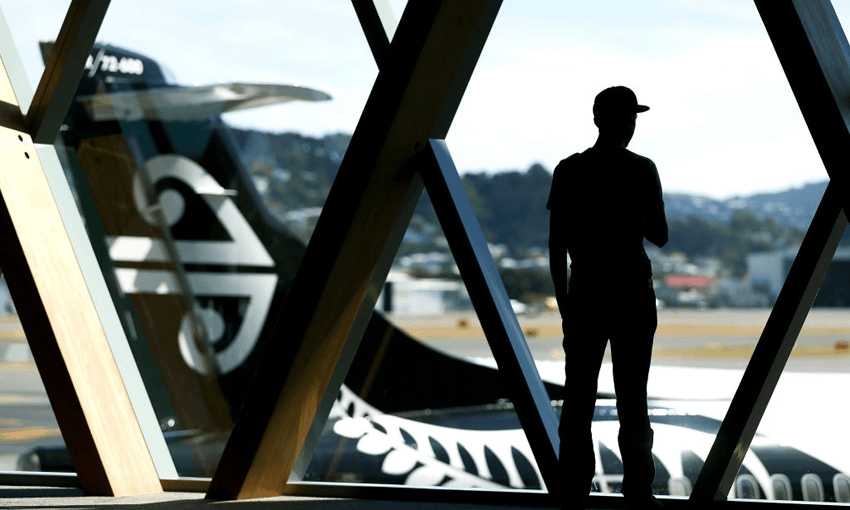There’s been good news this week for would-be New Zealanders in the age of Covid-19, as the government has given the green light for more workers and immigrants to enter the country.
There was a substantial shift at New Zealand’s border this week as the government announced plans to slowly lower the drawbridge and allow growing numbers of immigrants and workers into the country.
With New Zealand’s managed isolation system operating one-third empty for weeks now, the move signals the first significant relaxation of border restrictions since Covid-19 struck. Thousands of people waiting overseas, many in limbo for nearly six months, will now be allowed to return to New Zealand under the new rules.
Even with the changes, the Beehive will continue to operate one of the world’s most restrictive border regimes. Britons and Canadians are now travelling to Europe for holidays and to start their studies, while business air travel is slowly increasing again in North America.
Tourism looks unlikely in the coming year in New Zealand. Instead, visa holders with jobs who were outside the country when Covid-19 hit and the border suddenly closed will be allowed back in. As will thousands of children and partners of New Zealanders who had not been allowed to return yet. As recently as Monday, immigration officials were telling New Zealanders to travel overseas for the sole purpose of flying back with their loved ones.
The rule change won’t have an impact on mandatory testing and 14-day stays at managed isolation. Nearly everyone newly allowed to enter the country will also need to pay $3,100 for their stay at a border facility.
There are thousands of partners and children of New Zealanders stranded overseas. Their pleas for assistance in the comments are a regular feature in many of Labour leader Jacinda Ardern’s Facebook videos. She rarely responds to them. The change allowing for their return starting in October applies only to those with passports from visa-waiver countries, a category that includes most of Europe and the Americas, but excludes India and China.
“The government has had to operate tight border restrictions to prioritise the return of New Zealanders while keeping the Covid-19 virus contained,” immigration minister Kris Faafoi said in a statement.
“We are now in a position where we can make some adjustments to our immigration settings which will allow a small number of people who, under normal circumstances, would have the right to come to New Zealand to do so now.”
Speaking at a BusinessNZ election event yesterday, Ardern announced that Labour is now proposing a more significant change if it forms government after the October election. Labour would allow businesses to sponsor critical workers to enter the country and would look to attract “high-value” investors. The event was essentially closed to the public, with tickets for non-members set at $670.
With the shift, 10% of beds at border facilities would be set aside for critical workers with “skills that are not readily obtainable in New Zealand”, according to Ardern. As it happens, the Labour-led government changed the country’s definition of what constitutes a critical worker an hour before the Labour leader’s speech yesterday. The old standard was that their skills had to be “not obtainable” in New Zealand.
The new workers could help fill the country’s border facilities. There are about 7,900 beds in New Zealand’s network of hotels providing managed isolation and quarantine. Since early August, the hotels have been increasingly empty.
Here’s some border maths: there are always about 600 empty rooms in the facilities due to the need to clean them between occupants. According to Air Commodore Digby Webb, who is in charge of the facilities, a further buffer of about 10% of available rooms are left empty in case of unexpected need, like fog grounding flights of returnees in Auckland.
Once you subtract those rooms, there should be about 6,600 people in border facilities at full capacity. Since the start of last month that number as hovered around 5,200. That means the country left empty hotel rooms that could have allowed 4,000 more returnees over the past 42 days. Those rooms were empty because of strict border rules stopping nearly everyone except residents and citizens from returning.
There are little savings in empty hotel rooms as the government has already paid for them until the end of the year. However, the problem filling the rooms might start long before someone gets onto a plane for New Zealand, according to Webb.
Asked why so many rooms were left empty, he told The Spinoff that part of the problem was the few flights left around a world still grappling with Covid-19.
“We are seeing with flights into Australia, that they’ve put a number of conditions and constraints on the international air travel and domestic air travel in Australia,” said Webb.
“We know Australia makes up the vast majority of the arrivals to New Zealand, something like 80%. So when we’re seeing higher volatility, less certainty of travel in Australia, consequently we’re seeing less movement to New Zealand.”

